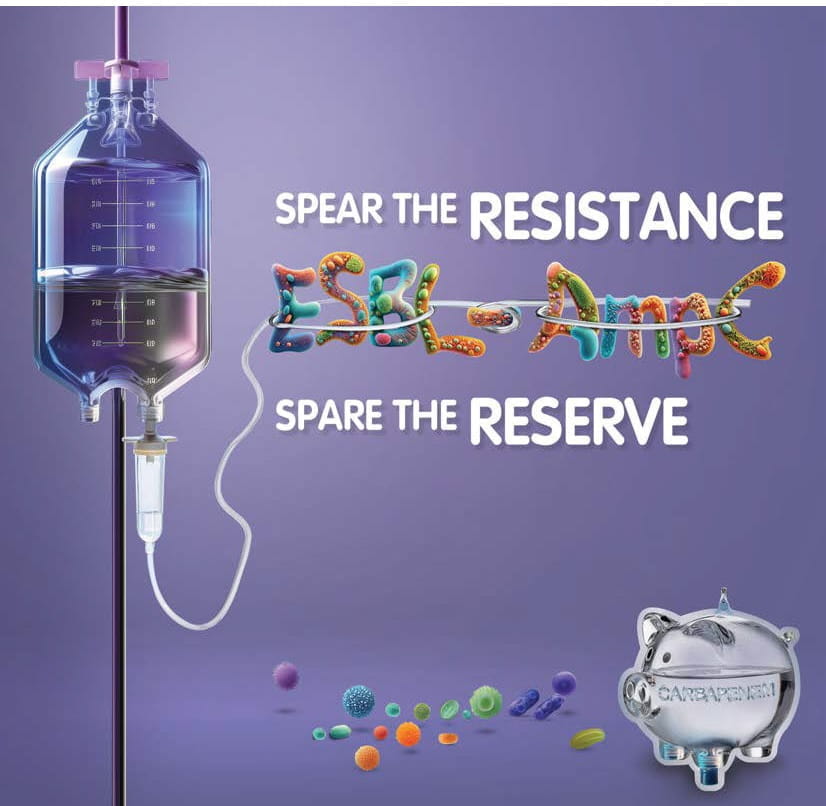The METALLO study compared the clinical efficacy of Cefiderocol, Avibactam + Aztreonam (CZA-ATM), and the best available treatment (BAT) for infections caused by Metallo-Beta-Lactamase (MBL) producing bacteria. According to the CDC's 2023 antimicrobial surveillance report, carbapenem resistance rates in certain European countries exceed 25% among invasive Enterobacteriaceae or Pseudomonas aeruginosa isolates. Infections involving MBL-producing bacteria are associated with high mortality rates (25-35%). Cefiderocol and CZA-ATM are potential treatments for MBL bacteria, but their comparative clinical efficacy remains understudied. The study aimed to assess and compare these treatments against the best available option for MBL gram-negative bacterial infections.
A retrospective study over 8 years at a Paris hospital focused on patients with MBL-positive clinical samples. Of the 233 screened patients, 136 with confirmed infections and antimicrobial therapy were analyzed. Primary endpoints, including clinical failure at day 30, were compared using survival analysis. Treatments varied, with 31 receiving Cefidirocol, CZA-ATM (49), and 56 receiving alternatives like colistin or fluoroquinolone. 80% of patients were male, around 60 years old, with comorbidities like diabetes, chronic kidney disease, and immunocompromised. Pneumonia was the most common infection site (35%), often ventilator-associated (85%). Over half presented with sepsis or septic shock (54%) and 34% were intubated. A study involving 136 patients revealed that approximately one-quarter were infected with Pseudomonas aeruginosa and three-quarters with Enterobacterales. Among the Enterobacterales group, the predominant bacteria were E. cloacae (33%), Klebsiella pneumoniae (27%), E. coli (10%), and other bacteria (10%). Most Enterobacterales displayed newly acquired MBL, while Pseudomonas aeruginosa predominantly had VIM. After treatment, 69% of patients achieved clinical recovery. By day 30, 39% experienced clinical failure, including 26% mortality and 18% relapse. The study compared the efficacy of Cefidirocol- avibactam, Aztreonam, and Cefidirocol combination versus BAT. Patients receiving the combination were primarily infected with Enterobacterales and were compared accordingly. Patients infected with Pseudomonas and Enterobacterales were compared with the overall BAT group. The primary endpoint, clinical failure at day 30, was 35.7% in the Enterobacterales group, similar to the best available therapy (BAT) group. However, it rose to 45% in the Cefidirocol group, though no significant difference was found compared to the BAT group. Mortality rates were numerically higher in the BAT group but not statistically significant. Conversely, relapse rates were significantly lower in the BAT group than in Cefidirocol (one-third affected) in Enterobacterales infections. In a comparison of CZA-ATM versus Cefidirocol in a subgroup of Enterobacterales infections, a bivariate COX model adjusted for invasive ventilation showed a lower risk of clinical failure at day 30 with CZA-ATM (adjusted hazard ratio of 0.28). Additionally, adverse events leading to treatment interruption were numerically higher (12%) in the BAT group, though not statistically significant.
The study concluded that neither CZA-ATM nor Cefidirocol showed superior clinical success compared to alternative antimicrobial therapies in patients infected with MBL-negative bacteria. However, subgroup analysis on MBL-Enterobacterales hinted at the potential higher efficacy of CZA-ATM compared to Cefidirocol in this population. Yet, these findings warrant confirmation through larger, prospective studies due to limitations such as small sample size and lack of statistical power.
European Society of Clinical Microbiology and Infectious Diseases (ESCMID) 2024, 27th April–30th April 2024, Barcelona, Spain




